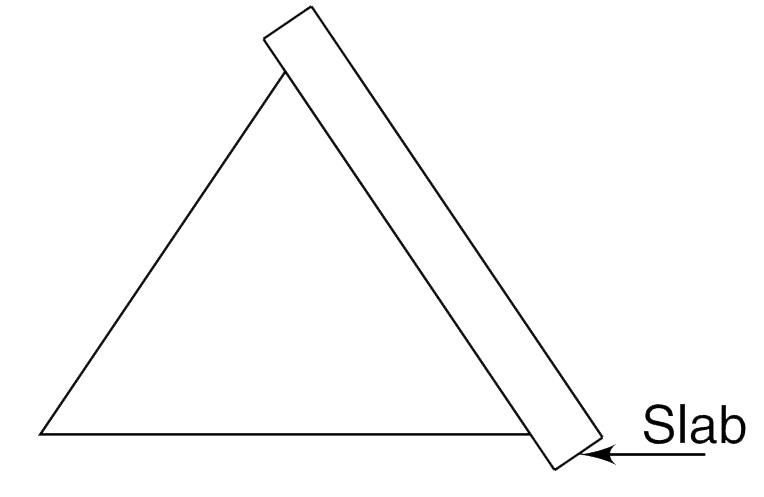An equilateral glass prism can produce a minimum deviation of 30° to the path of an incident ray. A transpar- ent slab of refractive index 1.5 is placed in contact with one of the refracting faces of the prism. Thickness of the slab is 3 cm. Now calculate the minimum possible deviation which can be produced by this prism-slab combination.

The correct Answer is:30∘
Step by step video, text & image solution for An equilateral glass prism can produce a minimum deviation of 30° to the path of an incident ray. A transpar- ent slab of refractive index 1.5 is placed in contact with one of the refracting faces of the prism. Thickness of the slab is 3 cm. Now calculate the minimum possible deviation which can be produced by this prism-slab combination. by Physics experts to help you in doubts & scoring excellent marks in Class 12 exams.
Topper's Solved these Questions
- BOOK - ARIHANTCHAPTER - GEOMETRICAL OPTICSEXERCISE - Level 262videos
GEOMETRICAL OPTICS
- BOOK - ARIHANTCHAPTER - GEOMETRICAL OPTICSEXERCISE - Level 39videos
GEOMETRICAL OPTICS
- BOOK - ARIHANTCHAPTER - ELECTROSTATICSEXERCISE - Level 359videos
ELECTROSTATICS
- BOOK - ARIHANTCHAPTER - MAGNETIC EFFECT OF CURRENTEXERCISE - Magnetic effect of Current45videos
MAGNETIC EFFECT OF CURRENT
Similar Questions
A prism of refractive index 1.53 is placed in water of refractive index 1.33. If the angle of prism is 60∘, calculate the angle of minimum deviation in water.
View SolutionA prism is made of glass of refractive index 1.5. If the angle of minimum deviation is equal to the refracting angle of the prism, calculate the angle of the prism.
View Solution
Knowledge Check
- Question 1 - Select One
An equilateral prism produces a minimum deviation of 30∘. The angle of incidence is
A30∘B60∘C45∘D90∘ - Question 2 - Select One
The angle of minimum deviation of a prism of refractive index √3 is equal to its refracting angle. Then the refracting angle of the prism is
A45∘B60∘C75∘D90∘ - Question 3 - Select One
The angle of minimum deviation of a prism of refractive index √3 is equal to its refracting angle. Then the refracting angle of that prism is
A30∘B45∘C60∘D90∘
A prism (apex angle A≤90°) produces minimum deviation that is equal to the apex angle. What can be said about the refractive index of the material of the prism.
View SolutionThe angle of minimum deviation is an equilateral prism of refractive index 1.414 is
View SolutionA ray of light suffers minimum deviation when incident on an equilateral prism of refractive index √2 . What is the angle of incidence ?
View SolutionA ray of light suffers a minimum deviation when incident on an equilateral prism of refractive index √2 The angle of incidence is
View SolutionA ray of light suffers a minimum deviation when incident on equilateral prism of refractive index √2 The angle of deviation is
View Solution

